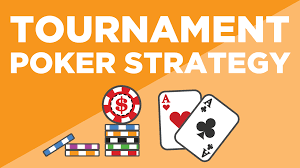This article focuses on when to consider moving all-in or pressing your entire stack in a poker tournament. This advanced play is actually a mistake many players make. Read on to learn more.
It is important to be able to exploit other players mistakes and make money doing so. One of the most profitable advanced poker strategies to use is to analyze what the player should have, considering the fairly loose nature of the poker tournament.
The hypotheses are:
- Your opponent will have a small pocket pair.
- Your opponent will call a small bet, then you reraise them and he folds with a small pocket pair.
- Your opponent will call your raise, then you called his small bet. He has a pocket pair.
As a result you will win a lot of small pots because players quite often call the bets your raises. The result is you will get paid off more when your monster hand actually wins.
This strategy is also applicable to online poker88 tournaments because quite often you will have a fold equity built into the online poker tournament rules. That is players will fold to your raises and you can call them. In that situation you will not be gambling, in fact you will have a positive return on your tournament poker chips.
The value of your hand is the sum of your pocket cards (the small and big blinds included) plus any money in the pot from previous blind raises. The larger the sum of your hand this hand is better for you as it is the only way to beat ALL of the hands on the table, including the blinds, the big blind and potentially other players.
Please note this hand is not a sure thing. It is a close special situation though if you consider folding to an all-in, pre-flop bet with this hand. If you consider calling the raise, you still only have a very close hand. Maintain the same tension and wait for the cards to come out on the flop, and you will win the pot.
However, if you do decide to make this play, you should consider so doing while your opponent is holding a high pocket pair. In fact, consider folding before the flop if your opponent is holding a high pocket pair. Often players will get a low pocket pair, say, ace-four or ace-five, and will call your raise pre-flop. Then, they will hit a high card on the flop and will have a high pocket pair. Folding in this situation would not be good because you would waste your chips to chase a low pocket pair. chase your losses and take the small pot because your high pocket pair hit a strong hand on the flop.
The idea is to take control of the betting action by either folding a hand, calling a bet in hopes of hitting a strong hand on the flop, or calling a bet on the flop when you have a high pocket pair. The idea is to end up the betting action to a point where your opponent will have to bet to get back in the game.
This is concept is best executed with an image of aggression. If you bet out aggressively, your opponent will be less likely to put you on a strong hand with a low pocket pair. Conversely, if you check pre-flop, your opponent will have a free look at the flop to resolve whether he should continue seeing it as a whole betting situation.
The image of a player who is willing to bet his stack on the flop, no matter what his cards are, is negative. Negative is to play a hand weakly. That’s passive. You see, negative players get rewarded for checking, not playing aggressive.
The next time your opponent rolls his eyes and rolls his chips to the center of the table, welcome him with a raise. Your aggressive opponent will probably pay you off, especially if he has a hand or two himself.
They say a picture is worth a thousand words. It is worth seeing the hand as a whole. With a strong hand, you need to take all the chances you can get, and give your opponents as many chances as you can get on the flop).
